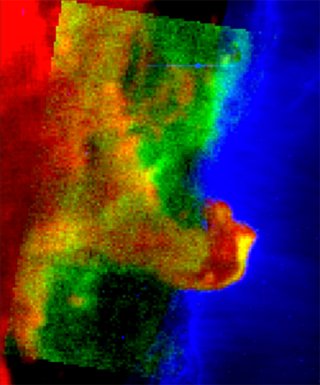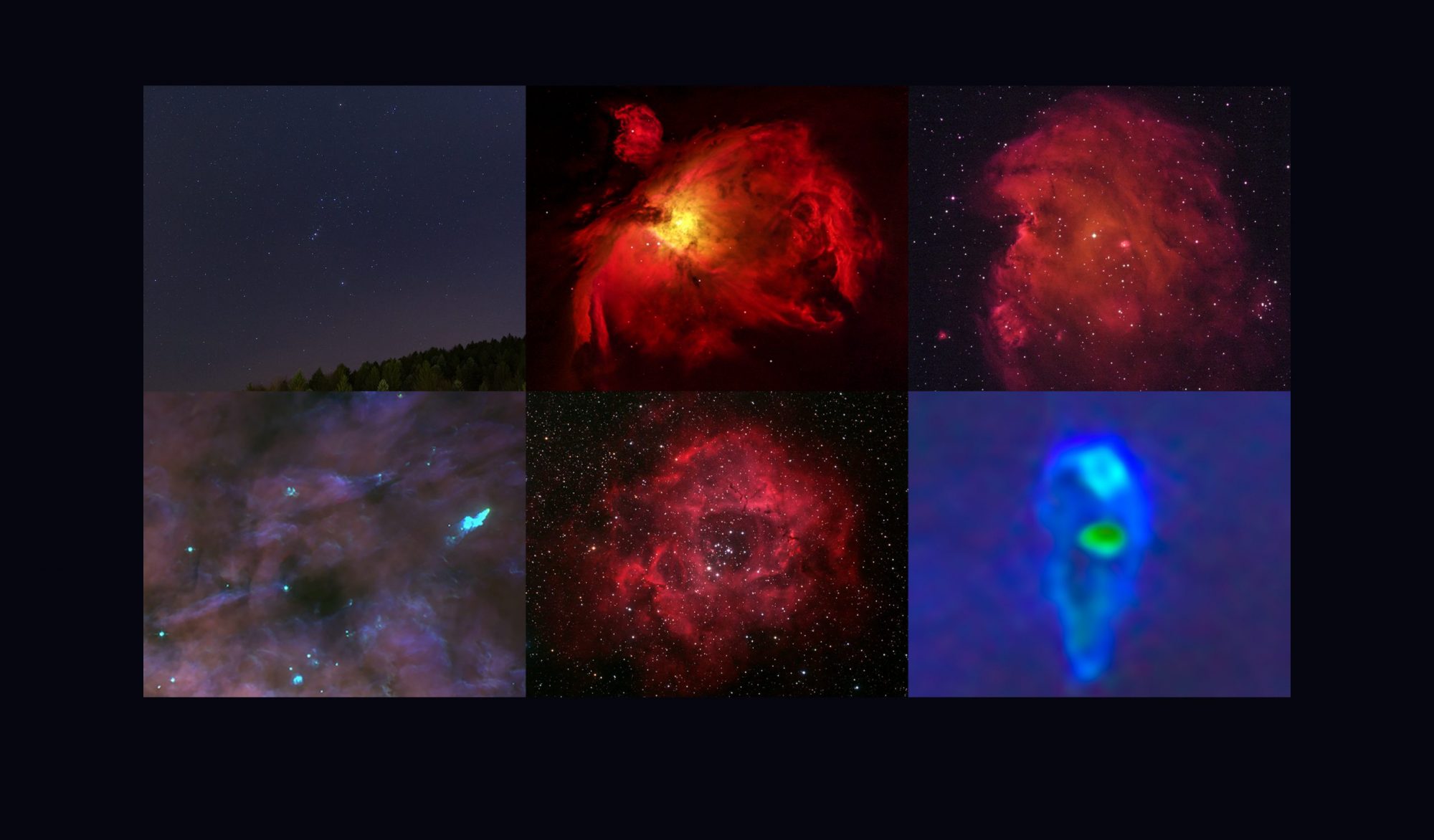Resources, papers and information (updated)
The Orion Nebula (also known as Messier 42, M42, or NGC 1976) is a diffuse nebula situated in the Milky Way, being south of Orion’s Belt in the constellation of Orion. It is one of the brightest nebulae, and is visible to the naked eye in the night sky. It is 1,344 ± 20 light-years (412.1 ± 6.1 pc) away and is the closest region of massive star formation to Earth. The M42 nebula is estimated to be 24 light years across. It has a mass of about 2,000 times that of the Sun. Older texts frequently refer to the Orion Nebula as the Great Nebula in Orion or the Great Orion Nebula.
The Orion Nebula is one of the most scrutinized and photographed objects in the night sky, and is among the most intensely studied celestial features. The nebula has revealed much about the process of how stars and planetary systems are formed from collapsing clouds of gas and dust. Astronomers have directly observed protoplanetary disks and brown dwarfs within the nebula, intense and turbulent motions of the gas, and the photo-ionizing effects of massive nearby stars in the nebula.
Sh2-279 (alternatively designated S279 or Sharpless 279) is an HII region and bright nebulae that includes a reflection nebula located in the constellation Orion. It is the northernmost part of the asterism known as Orion’s Sword, lying 0.6° north of the Orion Nebula. The reflection nebula embedded in Sh2-279 is popularly known as the Running Man Nebula.
https://en.wikipedia.org/wiki/Orion_Nebula
James Webb updates;

https://phys.org/news/2018-04-orion-horsehead-nebula.html

https://www.nasa.gov/feature/lifting-the-veil-on-star-formation-in-the-orion-nebula

https://www.nasa.gov/feature/goddard/2017/messier-42-the-orion-nebula
Science papers
https://arxiv.org/pdf/2005.03917.pdf Context. The Orion Molecular Cloud is the nearest massive-star forming region. Massive stars have profound effects on their environment due to their strong radiation fields and stellar winds. Stellar feedback is one of the most crucial cosmological parameters that determine the properties and evolution of the interstellar medium in galaxies.
https://arxiv.org/pdf/2003.12580.pdf Protoplanetary Disks in the Orion Nebula Cluster: Gas-disk Morphologies and Kinematics as Seen with ALMA
https://arxiv.org/pdf/2005.03917.pdf Context. The Orion Molecular Cloud is the nearest massive-star forming region. Massive stars have profound effects on their environment due to their strong radiation fields and stellar winds. Stellar feedback is one of the most crucial cosmological parameters that determine the properties and evolution of the interstellar medium in galaxies.

Welcome to Orion2Nebula!

